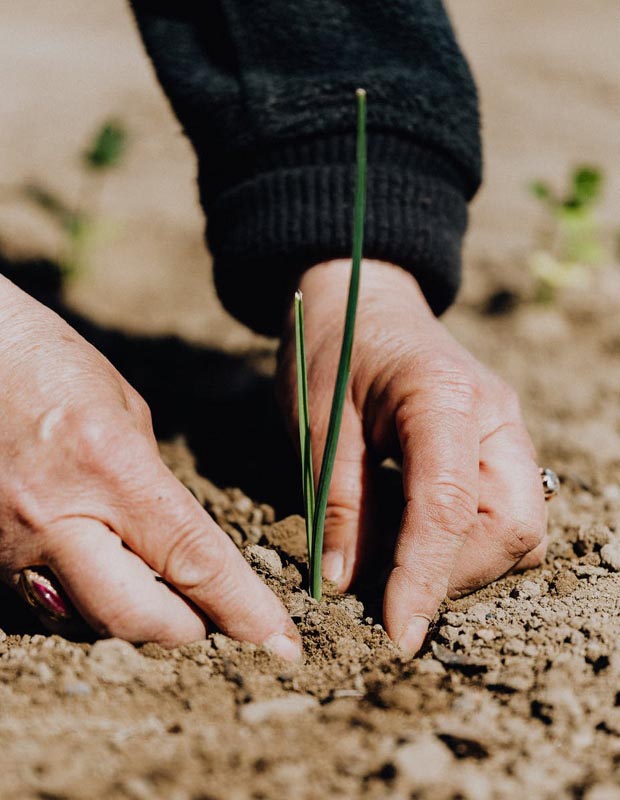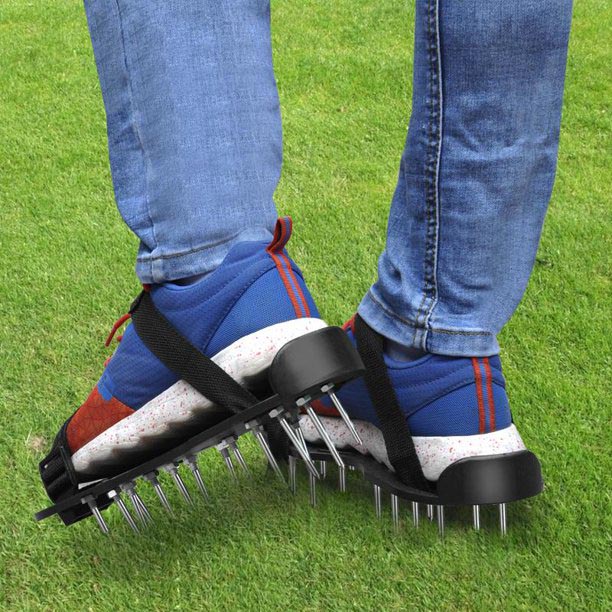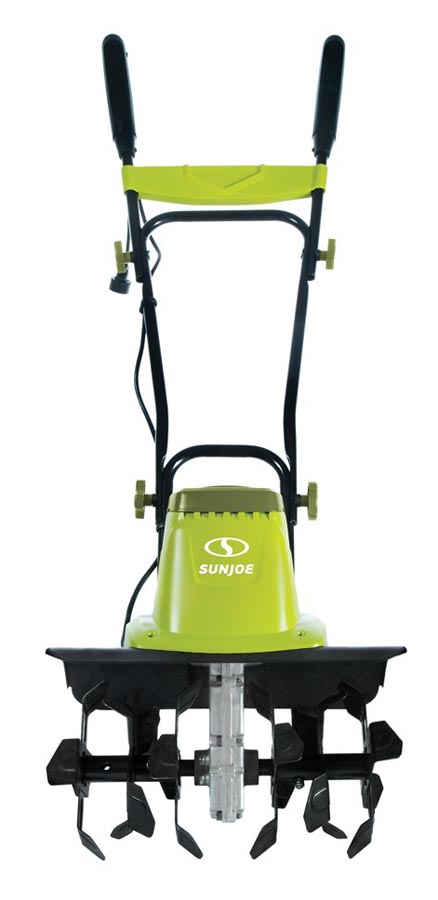
Sometimes, you don’t have a choice on what kind of soil you have in the yard. If you have hard dirt, then tough luck. But that doesn’t mean you can no longer have the lawn you dreamt about.
There are things you can do. Check out these ideas on how to plant grass seed on hard dirt.
What Is Hard Dirt?
Think of a plant as Goldilocks. It needs just the right type of soil in order to grow healthy.
If the soil is too hard, it will consume so much nutrients from plants that they will become malnourished. If the soil is too soft, it will make the plants vulnerable to damage.
Goldilocks principle
If you want healthy plants, you will need a soil that is just right.
But sometimes, you don’t have a choice on that matter. You might have purchased a house and the yard only has hard dirt.
How does hard dirt happen?
Hard dirt is basically the result of compaction.
Compaction is common in soils like clay and loam because they are generally heavy. However, other types of soil get compacted, too.
Look
Foot traffic, for one, will cause the soil to become compact.
Over a period of time, especially when the soil is not being taken care of, the pore spaces within the soil may have been reduced.
What are pore spaces?
These are basically “room” for the air and water to move within the ground structure. This way, there is space for nutrients to work its magic onto the plants.
Pore spaces are necessary. When they are reduced, there is barely space for the air, water, and nutrients to move around.
As a result
Your plants will not grow healthy and strong. In fact, they might not survive.
Specifically, hard dirt or compact soil is not going to do your grass seeds any favor. Grass roots, like any plant, need air, water, and nutrients. Compact soil rarely has enough pore spaces to accommodate these.

Is it a hopeless case to plant grass seed on hard dirt?
Absolutely not!
However, you will have to solve the problem first. Basically, you really cannot plant grass seed on hard dirt because it’s a waste of time.
What you can do is to treat that hard dirt and loosen it up.
How to Plant Grass Seed on Hard Dirt
So, you have hard dirt in the yard. It’s not the end of your dreams of having a really nice lawn. It’s all going to work out.
Here are the most important steps to follow when planting grass seed on hard dirt:
1. Soil test
You need to do a soil test so you will have an idea of the composition of your hard dirt.
A soil test is an analysis of the composition of the soil as well as the concentration of plant nutrients. It is necessary to detect the missing nutrients that you need to make up with the use of fertilizers.
How to test the soil?
There are test kits usually available in the garden section of your local supermarket. But they are usually for individual nutrients or to determine the acidity of the soil.
Your local agriculture office or its community equivalent may have a lab to test your soil for you. Some gardening specialty stores may also offer this service.
The lab test is usually more detailed. The result will tell you how much clay or loam is present in the soil as well as how short it is on nitrogen or phosphorus–among other things.
2. Soil aeration
This is a logical activity when you deal with compacted soil. Hard dirt means there is no space for air to go through, so it’s just right to put air back into the space.
It’s great to introduce air back into the soil through the process of aeration.
There are different ways:
For larger areas, you can use a lawn aerator to do the work. If you have a smaller yard, you can use aerator shoes.
The latter is actually a great way to be fit while also providing more pore spaces in your yard.

What does an aerator do?
The machine will put out small clumps of soil in order to give the hard dirt some breathing space. So, there will be small holes left all around the yard–not a sight for trypophobic people.
3. Compost
The best time to add compost to the soil is when you have just done soil aeration. Organic matter, which includes compost, is a great long-term solution to soil compaction.
Basically, you are not just loosening up hard dirt, you are also making sure that you will prevent soil compaction in the near future.
4. Soil tilling
One way to really incorporate the organic matter into the lower layers of the soil is through tilling.
While aeration and adding compost would be enough treatments to make plants grow, making them grow healthy or allowing them to thrive beautifully is another matter completely.
In that case, you may expect these:
Since we’re talking about grass seed here, your lawn will most likely have bald spots. You can expect more weeds as well.
Plus, you can expect more puddles because the water will not penetrate the lower layers of the soil.
Back to tilling
So, allow the soil to be loosened further through tilling. You don’t need to sweat it out too much as there is a rototiller machine that can simplify your work.

5. Topsoil
This is the topmost layer of the soil–duh! It’s where the biological activity of the Earth is happening.
As such, it should have the highest concentration of microorganisms and organic matter.
Obviously
Having hard dirt means that you don’t have a good topsoil. The great thing is you can actually purchase topsoil.
The topsoil should be five to 10 inches of good soil to cover or at least mix with the hard dirt. The topsoil is where a great concentration of roots is found, hence, should have important nutrients present.
6. Ready for planting
Now, your hard dirt is already a loosened soil that is also rich in nutrients with a good number of pore spaces.
It’s time to plant your grass seeds.

You know, the hard part is done. Making the hard dirt healthy in order to cater to the growth of lawn grass is the hard part. After that, things are much easier.
Here are the steps to planting grass seed:
a. Prepare the soil
Basically, after doing soil aeration and tilling, the soil is already ready for planting. The basics are that the soil should be free from stones and other debris, as well as clumping.
b. Plant the grass seed
You can spread the seeds out by hand. You just evenly scatter them onto the ground. If you have a large area, you might want to use a lawn spreader.
Expert gardeners say that you should sprinkle about 16 seeds for every square inch. You don’t want more than that or the seeds will be competing for nutrients and room to grow.
c. Cover the seed
Just lightly cover the seed with soil. You don’t want them flying around from the wind and you surely want something to put the seed in place to be able to retain moisture.
d. Care for your grass
To augment germination, you need to keep the area moist. You then need to water it at least once a day until the grass has grown.
It’s also important to note that the packaging for the grass seed has instructions on how best to take care of it. Follow the instructions to make sure you give it the care it actually needs.
Summary
You want to have a lawn but you unfortunately have hard dirt? Don’t fret! There are ways to loosen that hard dirt.
Compacted soil could be due to heavy traffic on the yard. Perhaps cars used to pass through it. Or maybe nobody just took care of the soil for such a long time.
If you’re wondering how to plant grass seed on hard dirt, the answer mostly lies on the treatment of the compact soil. You just need to loosen it and make it ready to cater to a green bed of grass.
You Might Also Like
We mentioned aerator shoes in this article, so it’s just right that we also provide you with the best aerator shoes on the market today.
Since this is also about planting grass, here is a list of the fastest-growing types of grass in the world. In connection to that, here is your step-by-step guide to seeding a lawn.
Useful Resources
- How to Loosen Hard Soils – SFGATE
- Our Top 10 Tools for Working the Soil – Good Housekeeping
- Composting 101 – National Resources Defense Council

